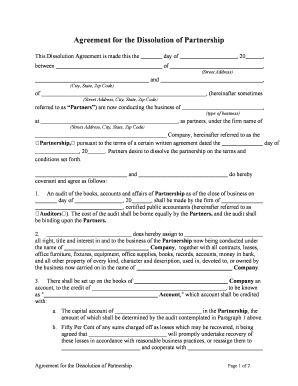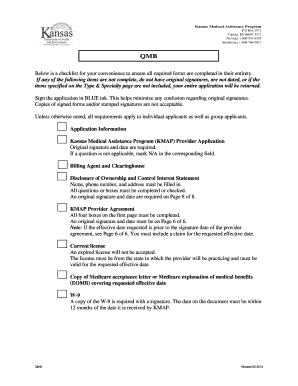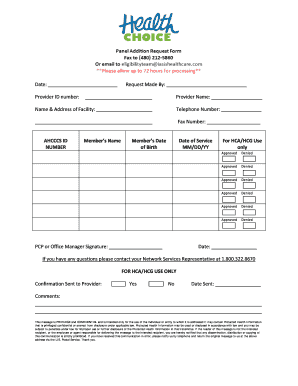
Get the free ca disclosure form
Show details
CALIFORNIA SUPPLEMENTAL DISCLOSURES PACKAGE REQUIRED FOR SALE OF RESIDENTIAL REAL ESTATE CA37014BThe following Disclosures are contained herein: 1. 2. 3. 4. 5. 6. 7. 8. 9. Smoke Detector Statement
We are not affiliated with any brand or entity on this form
Get, Create, Make and Sign

Edit your ca disclosure form form online
Type text, complete fillable fields, insert images, highlight or blackout data for discretion, add comments, and more.

Add your legally-binding signature
Draw or type your signature, upload a signature image, or capture it with your digital camera.

Share your form instantly
Email, fax, or share your ca disclosure form form via URL. You can also download, print, or export forms to your preferred cloud storage service.
How to edit ca disclosure online
To use the professional PDF editor, follow these steps:
1
Register the account. Begin by clicking Start Free Trial and create a profile if you are a new user.
2
Upload a document. Select Add New on your Dashboard and transfer a file into the system in one of the following ways: by uploading it from your device or importing from the cloud, web, or internal mail. Then, click Start editing.
3
Edit supplemental disclosure form. Rearrange and rotate pages, add and edit text, and use additional tools. To save changes and return to your Dashboard, click Done. The Documents tab allows you to merge, divide, lock, or unlock files.
4
Save your file. Choose it from the list of records. Then, shift the pointer to the right toolbar and select one of the several exporting methods: save it in multiple formats, download it as a PDF, email it, or save it to the cloud.
How to fill out ca disclosure form

How to fill out ca disclosure:
01
Start by carefully reading the instructions provided with the ca disclosure form.
02
Gather all necessary information and documents required to complete the disclosure accurately.
03
Begin filling out the form by providing your personal information such as name, address, and contact details.
04
Follow the instructions to disclose any relevant financial information, such as income, assets, and debts.
05
Provide details about any real estate holdings or rental properties you own.
06
Disclose any investments, stocks, or business interests you possess.
07
If applicable, disclose any liabilities or debts owed.
08
Complete the form by signing and dating it as required.
09
Double-check all the information entered to ensure accuracy before submitting the ca disclosure form.
Who needs ca disclosure:
01
Individuals or entities involved in a real estate transaction in California may need to complete a ca disclosure.
02
Sellers are typically required to complete a ca disclosure to provide potential buyers with information about the property they are selling.
03
Buyers may also need to fill out a ca disclosure to disclose any relevant financial information to the sellers and other parties involved in the transaction.
Fill supplemental disclosure : Try Risk Free
For pdfFiller’s FAQs
Below is a list of the most common customer questions. If you can’t find an answer to your question, please don’t hesitate to reach out to us.
What is ca disclosure?
CA disclosure refers to the requirement of providing certain information or making certain statements in accordance with the California law. It typically refers to disclosing specific information about a product, service, or transaction to consumers or users, as required by the California regulations or laws. This may include disclosing details about a product's ingredients, potential risks, warranties, terms and conditions, privacy policies, financial disclosures, or other relevant information that is necessary for consumers to make informed decisions or protect their rights. The purpose of CA disclosure is to ensure transparency, consumer awareness, and compliance with the law.
Who is required to file ca disclosure?
The term "ca disclosure" is not specific enough to determine who exactly is required to file it. "CA" could refer to California, a company name, or other contexts. Can you please provide more information or clarify your question?
How to fill out ca disclosure?
To fill out a California (CA) disclosure, follow these steps:
1. Obtain the necessary form: California has various disclosure forms for different purposes such as seller disclosure, rental disclosure, or agency disclosure. Make sure to obtain the correct form that aligns with your specific needs.
2. Read the instructions: Carefully read the instructions provided with the form to understand the specific requirements for filling it out. Familiarize yourself with the purpose of the disclosure and any guidelines provided.
3. Provide accurate information: Begin filling out the form by providing accurate and complete information as required. This may include personal details, property information, and any relevant disclosures.
4. Disclose relevant information: Depending on the type of disclosure form, you may need to disclose various details such as known defects, property history, environmental hazards, or any other significant information that may affect the property value or the decision of the parties involved.
5. Review your answers: Once you have completed filling out the form, carefully review all your answers to ensure accuracy and completeness. Double-check for any missing information or mistakes.
6. Get professional advice if necessary: If you are unsure about any specific details or legal requirements, it is advisable to consult with a real estate attorney or a professional who can guide you through the process and ensure compliance with California regulations. Their assistance can provide added reassurance and help avoid any legal complications.
7. Sign and date the disclosure form: Once you are confident that the form is filled out correctly, sign and date the document as required. Some forms may require signatures from all parties involved, so ensure that everyone signs accordingly.
8. Provide copies to relevant parties: Make copies of the completed and signed disclosure form for all parties involved. Distribute the copies as required, ensuring that all parties receive a copy for their records.
Remember, the process of filling out a CA disclosure may differ depending on the specific form and the circumstances. Always read and follow the instructions provided with the form, and seek professional advice whenever necessary to ensure compliance with California laws and regulations.
What is the purpose of ca disclosure?
The purpose of CA (California) disclosure is to inform and educate individuals about certain important information, rights, obligations, and risks related to various aspects of their lives. CA disclosure requirements are specific to the state of California and cover a wide range of areas, such as real estate transactions, consumer protection, privacy rights, and environmental regulations.
For example, in real estate transactions, sellers and agents are required to provide potential buyers with various disclosures about the property's condition, potential hazards, and other relevant information. This is intended to ensure transparency and allow buyers to make informed decisions.
In consumer protection, CA disclosure laws aim to prevent deceptive practices by requiring businesses to disclose relevant information about products or services, such as pricing, contract terms, warranties, or refund policies. This helps consumers make informed choices and protects them from unfair or misleading practices.
Overall, the purpose of CA disclosure is to promote transparency, protect individuals and consumers, and ensure that people have access to relevant information for making informed decisions in various aspects of their lives.
What information must be reported on ca disclosure?
The information that must be reported on a California disclosure includes:
1. Seller Information: The name, address, and contact details of the seller or the party transferring the property.
2. Property Information: The address of the property being sold, including the legal description and parcel number.
3. Condition of Property: Any known material defects or issues with the property that may affect its value or desirability, such as structural problems, water damage, or issues with electrical or plumbing systems.
4. Environmental Hazards: Any known environmental hazards on or near the property, including but not limited to, lead-based paint, asbestos, mold, radon gas, or contaminated soil or water.
5. Natural Hazards: Disclosures regarding any natural hazards that may affect the property, such as being located in a flood zone, earthquake zone, or fire-prone area.
6. Zoning: Information regarding the zoning classification of the property and any known restrictions or limitations on its use, such as building restrictions, height limits, or setback requirements.
7. Title Issues: Any known title issues or encumbrances on the property, such as liens, easements, or other restrictions that may affect the buyer's ability to own or use the property.
8. Homeowners Association (HOA): If the property is part of a homeowners association, the disclosure should provide information about the HOA, including fees, rules, and any pending or ongoing legal or disciplinary actions.
9. Legal Disclosures and Disputes: Any known legal disputes or litigation related to the property, including pending or ongoing lawsuits, or any discrepancies or disagreements related to property boundaries or rights.
10. Other Disclosures: Any additional information that may be relevant or required by law, such as disclosures about the presence of registered sex offenders in the neighborhood, earthquake hazards, or other specific requirements under California law.
It is important to note that this is a general overview, and the specific information required on a California disclosure may vary based on the type of property being sold and the applicable local regulations. It is advisable to consult with a real estate professional or attorney to ensure compliance with all disclosure requirements.
How do I edit ca disclosure online?
pdfFiller not only allows you to edit the content of your files but fully rearrange them by changing the number and sequence of pages. Upload your supplemental disclosure form to the editor and make any required adjustments in a couple of clicks. The editor enables you to blackout, type, and erase text in PDFs, add images, sticky notes and text boxes, and much more.
How do I fill out california residential estate using my mobile device?
You can quickly make and fill out legal forms with the help of the pdfFiller app on your phone. Complete and sign california real estate form and other documents on your mobile device using the application. If you want to learn more about how the PDF editor works, go to pdfFiller.com.
How do I edit california disclosure statement on an Android device?
With the pdfFiller mobile app for Android, you may make modifications to PDF files such as california disclosure form. Documents may be edited, signed, and sent directly from your mobile device. Install the app and you'll be able to manage your documents from anywhere.
Fill out your ca disclosure form online with pdfFiller!
pdfFiller is an end-to-end solution for managing, creating, and editing documents and forms in the cloud. Save time and hassle by preparing your tax forms online.

California Residential Estate is not the form you're looking for?Search for another form here.
Keywords relevant to california residential real form
Related to california residential sale
If you believe that this page should be taken down, please follow our DMCA take down process
here
.























